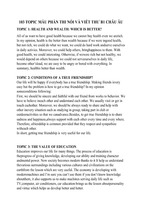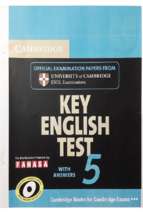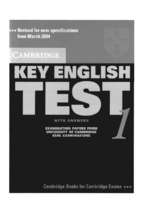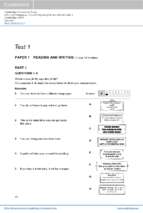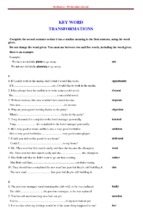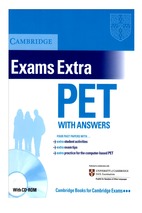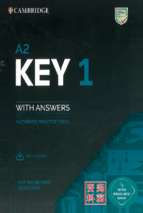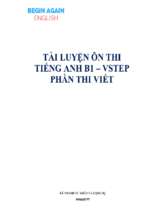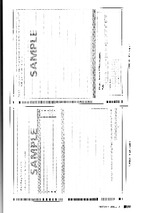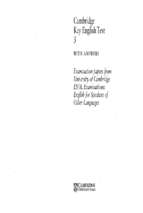VIETNAM NATIONAL UNIVERSITY, HANOI
VIETNAM JAPAN UNIVERSITY
DO MINH HANH
FACTORS INFLUENCING CONSUMERS’
GREEN PURCHASE DECISION
MASTER’S THESIS
i
VIETNAM NATIONAL UNIVERSITY, HANOI
VIETNAM JAPAN UNIVERSITY
DO MINH HANH
FACTORS INFLUENCING CONSUMERS’
GREEN PURCHASE DECISION
MAJOR: BUSINESS ADMINISTRATION
CODE: 8340101.01
RESEARCH SUPERVISORS:
Assoc. Prof. PHAM THI LIEN
Prof. MOTONARI TANABU
Hanoi, 2020
ii
ACKNOWLEDGEMENT
First of all, I would like to send my sincere thankfulness to everyone in MBA
program of VJU for creating a chance for me to be a student of VJU and supporting
us during this 2-year experience. To Assoc. Prof. Liên and Prof. Tanabu, I sincerely
thank you for approving my thesis proposal, your patience and advices during my
thesis process. Cô Hạnh, thank you so much for your supporting and
encouragements in the last 2 years, since I started my extra classes at the beginning
of my VJU journey. To Hino sensei and Hương-san, thank you for always being at
the office, and for supporting us.
Secondly, I am so grateful for all of my friends at VJU, MBA fellows, MAS pals,
MCCD pals, Nano pals, VJU officers and MIE pals, have being by my side and
support me during these school years. So glad to have friends like you.
And, in this journey, I have received supports from YNU IPO staffs also,
Sakakibara-san, Mizuno-san, and Maeda-san, Matsui sensei, Morita sensei, Kodo
sensei, Heller sensei, Guo sensei and other Professors and generous friends from
YNU.
Yours sincerely,
Do Minh Hanh.
iii
TABLE OF CONTENTS
CHAPTER 1. INTRODUCTION .......................................................................................... 1
1.1. Research background ...................................................................................................... 1
1.2. Research objectives ........................................................................................................ 4
1.3. Research scope................................................................................................................ 4
1.4. Research structure ........................................................................................................... 5
CHAPTER 2. LITERATURE REVIEW ............................................................................... 6
2.1. Green Purchase Inconsistency and related definitions ................................................... 6
2.1.1. Green product ............................................................................................................... 6
2.1.2. Green purchase ............................................................................................................. 7
2.1.3. Green purchase decision ............................................................................................... 9
2.1.4. Green purchase Inconsistency .................................................................................... 11
2.2. Theories examined ........................................................................................................ 14
2.2.1. Streams of research .................................................................................................... 14
2.2.2. Frameworks examined on buyer purchase decision process ...................................... 15
2.2.3. Social dilemma and Self-control theories in Green purchase .................................... 20
2.3. Factors influencing on Green Purchase Decision - Hypothesis development .............. 24
2.3.1. Reference Group’s Influence...................................................................................... 24
2.3.2. Expectation to Other’s Cooperation ........................................................................... 26
2.3.3. In-group identity ......................................................................................................... 27
2.3.4. Value – Altruism and Egotism ................................................................................... 28
2.3.5. Hedonic motive - Novelty Seeking ............................................................................ 30
2.3.6. Environmental Knowledge ......................................................................................... 32
2.3.7. Perceived Behavior Control ....................................................................................... 32
2.3.8. Perceived Product Efficiency ..................................................................................... 33
2.4. Research conceptual model .......................................................................................... 36
CHAPTER 3. RESEARCH METHODOLOGY ................................................................. 37
3.1. Research Approach and Research Design .................................................................... 37
3.2. Constructs Operationalization ...................................................................................... 39
3.3. Questionnaire and Pilot Testing.................................................................................... 43
3.4. Data collection .............................................................................................................. 44
3.4.1. Secondary data ........................................................................................................... 44
3.4.2. Primary data ............................................................................................................... 44
3.5. Data analysis ................................................................................................................. 45
iv
3.5.1. Cronbach’s Alpha measurement ................................................................................ 46
3.5.2. Exploratory Factor Analysis (EFA) ........................................................................... 46
3.5.3. Confirmatory Factor Analysis (CFA)......................................................................... 48
3.5.4. Structural Equation Modeling (SEM) ........................................................................ 49
CHAPTER 4. DATA ANALYSIS ...................................................................................... 50
4.1. Descriptive Analysis ..................................................................................................... 50
4.2. Measurement Model Test ............................................................................................. 53
4.2.1. Cronbach’s Alpha measurement ................................................................................ 53
4.2.2. Exploratory Factor Analysis (EFA) ........................................................................... 57
4.2.3. Confirmatory Factor Analysis (CFA)......................................................................... 59
4.3. Structural Model Test ................................................................................................... 65
4.3.1. Natural Product........................................................................................................... 67
4.3.2. Reused Product ........................................................................................................... 69
CHAPTER 5. CONCLUSION ............................................................................................ 72
5.1. Discussion on Findings ................................................................................................. 72
5.2. Implication .................................................................................................................... 76
5.3. Limitations and future research direction ..................................................................... 77
5.4. Conclusion .................................................................................................................... 78
REFERENCES .................................................................................................................... 80
APPENDIX 1. Literature Review of Empirical Researches on Green purchase
Inconsistency ....................................................................................................................... 85
APPENDIX 2. Online Survey ............................................................................................. 89
v
LIST OF TABLES
Table 2.1. Factors on Green Purchase ....................................................................... 18
Table 2.2. Research streams on Green Purchase and foundation researches ................... 20
Table 2.3. Factors on Green Purchase Decision and related theories ............................... 24
Table 2.4. List of Hypotheses ........................................................................................... 35
Table 3.1. Measurement of Social Factors ....................................................................... 39
Table 3.2. Measurement of Individual Factors ................................................................. 40
Table 3.3. Measurement of Situational Factors ................................................................ 41
Table 3.4. Measurement of Green Purchase Decision ...................................................... 42
Table 3.5. Statistical Analysis Procedure ......................................................................... 46
Table 3.6. Requirement for EFA result............................................................................. 47
Table 3.7. Model Fit Requirement .................................................................................... 48
Table 3.8. Reliability of construction, Convergent validity and Discriminant validity.... 49
Table 4.1. Respondents’ demographic information .......................................................... 50
Table 4.2. Cronbach’s Alpha result 1 ............................................................................... 53
Table 4.3. Factor Analysis for PBC variable .................................................................... 54
Table 4.4. Excluded and changed items ........................................................................... 55
Table 4.5. Cronbach’s Alpha result 2 ............................................................................... 56
Table 4.6. EFA result 1 ..................................................................................................... 57
Table 4.7. Rotated component – EFA result 1 .................................................................. 58
Table 4.8. Rotated component – EFA result 2 .................................................................. 60
Table 4.9. Model Fit result................................................................................................ 62
Table 4.10. Reliability, Convergent validity and Discriminant validity ........................... 63
Table 4.11. Latent variables and Observed variables ....................................................... 64
Table 4.12. Model fit value of conceptual framework ..................................................... 65
Table 4.13. Natural product: Interaction between latent variables ................................... 67
Table 4.14. Hypotheses test for Natural product .............................................................. 68
Table 4.15. Reused product: Interaction between latent variables ................................... 69
Table 4.16. Hypotheses test for Reused Product. ............................................................. 70
Table 4.17. Differences of hypotheses testing between 2 sorts of green product. ............ 71
vi
LIST OF FIGURES
Figure 2.1. Buyer Decision Process ....................................................................... 10
Figure 2.2. Factors on Purchase behavior for Green personal care products ........ 19
Figure 2.3. Conceptual Model ................................................................................ 36
Figure 3.1. Research Procedure ............................................................................. 38
Figure 4.1. Frequency of Green Purchase .............................................................. 51
Figure 4.2. Monthly Expense for Green Purchase ................................................. 52
Figure 4.3. Place to buy Green Product ................................................................. 52
Figure 4.4. Hypotheses Structural Equation Modeling .......................................... 66
vii
CHAPTER 1. INTRODUCTION
1.1.
Research background
Environmental issues are one of the biggest challenges in the 21th century (Edgar
G.Hertwich, 2010). The emission to the air, land and water is not only caused by
natural system processes anymore. Nowadays, human activities emit and alter the
natural system more quickly than nature can adapt, recycle and purify (Nicolaisen et
al., 1991).
Thus, the Earth’s ecology system has been changed significantly: extreme weathers
occur; natural resources are depleted and degraded; living creatures suffers
unhealthy altered habitat, biodiversity loss occurs, human being’s health problems
increases. This is not affect living standard of the present creatures but also of the
future generation.
It is conceivable that human activities have been creating such adverse effects on
environment tragically. Population, How we consume and How we produce things
are 3 elements of human’s impact on the planet (George Monbiot, 2013).
Humankind has induced environment degradation via excessive and polluted
producing and consuming process, the increase of population requires higher
resource consumption as well. Fossil fuel use (for transportation, production of
manufacturing goods, etc.) and food consumption (agriculture and fishery) are said
to have made significantly negative impacts on the Earth system’s balance. In most
countries, household consumption takes account up to 60% or more of final
consumption’s effects on ecosystem. Food and housing have most influence on
greenhouse gas emission, in emerging countries (Edgar G.Hertwich, 2010).
In additions, humankind activities’ impacts tend to increase in the future as usual
scenario, especially regards in economic activities (Edgar G.Hertwich, 2010). In
particularly, the higher economic, income and population growth, the higher level
of CO2 emission. Besides, according to the United Nation, with the current trend,
global population would be 9.6 billion in 2050. To sustain resource demand of
current lifestyle for that significant number of population, 3 planets like the Earth
1
are in needed (United Nation website). If patterns of production and consumption
are not changed, creatures will face more extreme effects (UNEP, George Monbiot).
Since negative impacts on environment of excessive producing and consuming have
increased tremendously, sustainable development has been emerged. Sustainable
development supports development which reduces adverse influence on the ecology
and society (Joshi & Rahman, 2015). Sustainable production and consumption are
two components of sustainable development. Firstly, sustainable production
encourages on environmental sustainability practices at all processes of goods and
services creation. Secondly, sustainable consumption indicates consideration of
consumers on their buying, using and disposing products and services, how these
things impact on environment.
Sustainable development has become global level, both in developed countries and
developing economies. There has been an increase in the number and scope of
environmental regulations by many governments. Approximately 100 countries are
actively implementing policies and indicators to promote sustainable consumption
and production (Groening et al., 2018). Green brands is indicated to grow rapidly at
global level (Liobikienė & Bernatonienė, 2017). European Commission reported
that green product’s global market size is around $6 trillion, grow rate is around
13% annually (Goh & Balaji, 2016). Green products have developed in a wide
range of industries: food, construction, energy, automobiles, hospitality, tourism,
home appliance, etc.
In Vietnam, sustainable development is concerned in recent years. To promote
sustainable production and consumption, Vietnam government has introduced
several regulations, takes part in international program and commitment, and is
supported by international organizations. In terms of business sectors, not only big
companies (Unilever, Metro, Big C, etc.) join in this segment, there are enterprises
start to provide green products such as Aneco, producer of bio compostable kitchen
appliances (Thuy Ho Thanh, 2018). Even small business like café, restaurants, retail
stores, their awareness for providing environmental friendly products and services
has increased. They supply cane container, biodegradable or paper bag for food and
beverage products, bamboo and rice straw for drinks, reducing price for customers
2
who bring their own jars to buy products. The variety of green products has been
broaden, besides traditional green products like energy saving electronic appliances,
companies provide a wide range of organic foods and beverage, natural component
cosmetic, home appliance, green construction, ecotourism, etc. Vietnamese
consumers also show their interest in green products and services. As Nielsen
Vietnam reported, Vietnamese consumers are concerned on “green”, “clean” issues
and willing to pay higher for brands which commits on environmental friendly
products and services (Thuy Ho Thanh, 2018).
However, other polls show contrast results with the above positive patterns, both in
the context of Vietnam and global (Gupta & Ogden, 2009; Goh & Balaji, 2016;
Shao & Ünal, 2019; Joshi & Rahman, 2015; Gleim et al., 2013). Actually, green
products accounts for a small part of global demand, about 1-3% of the total market,
green product sales seem to be trending downward (Goh & Balaji, 2016).
Regarding to consumer, there is group of consumer does not trust in green claims of
the products to be accurate (Goh & Balaji, 2016). There is another group who even
shows their concern for environment or preference attitude for green product, but
does not willing to obtain or pay a premium price for sustainable product (Gupta &
Ogden, 2009), even there is the growing popularity of green products on retail
shelves (Gleim et al., 2013). This result is similar with what written in Jing Shao’s
study (Shao & Ünal, 2019): Almost 50% of respondents showed preference when
being asked about buying hybrid cars, less than 12% of the respondents are
predicted to purchase one due to current trade-offs. Hence, the positive tendency of
consumers’ attitude would not predict accurately for their purchase on green
product.
These phenomena show that it is challenge for marketer in green products field,
there are barriers for consumers to acquire environmental friendly products. Besides,
it is essential to have perspective on the demand side. Firstly, as Groening said:
“The need to understand green purchasing behavior is especially timely due to
environmental, scientific, and communication advances, such as the internet, and
social media, and increases in consumer awareness of and concern with
environmental issues including population growth and global warming” (Groening
3
et al., 2018). Secondly, it is advantage for business to capture benefits from green
orientation (Gleim et al., 2013).
Hence, to have an insight of green purchase decision is necessary when the pattern
of producing and consuming should be changed toward sustainable development
goal for the current as the future generation.
1.2.
Research objectives
Derived from the context described above, this present research aims to contribute
prior studies on identifying factors for purchase decision on green products of
consumers.
In particularly, the present study examines proposed framework from previous
theoretical studies to understand determinants on consumers’ green purchase based
on two theories - social dilemma theory and self-control theory. These determinants
are categorized into three groups including individual, situation and social factors.
- Individual factors are: value (altruism and egoistic), hedonic motivation (novelty
seeking), and knowledge.
- Situation factors are: perceived behavior control and perceived product efficiency.
- Social factors are: reference group’s influence (informative, utilitarian and value
expressive influences), in-group identity and expectation to others’ cooperation.
This research aim to find answer for research question which is:
- What factors influence on consumers’ green purchase decision?
- To what extend these factors impact on consumers’ green purchase decision?
1.3.
Research scope
1.3.1. Content scope: Factors influencing on consumers’ green purchase decision.
1.3.2. Place scope: Hanoi and Ho Chi Minh City.
4
In Vietnam, due to the fast speed of emerging economy, high rate of urbanization,
social changes which led to numerous issues related to environment. Thus, many
cities in Vietnam are polluted with atmosphere indication and waste problem are
urgent recently with the fast pace of living lifestyle. Besides, citizens, especially in
fast-growing cities like Hanoi or Ho Chi Minh City, is considered to concern for
green products and services, and also would have chances to approach this product
segment.
Thus, investigation of green purchase decision, especially in a fast developing cities
as Hanoi, Ho Chi Minh city, might give an insight of how consumers decision on
green products are influenced.
1.3.3. Time scope: October 2019 to May 2020.
1.4.
Research structure
This research content has 5 chapters:
- The first chapter introduces research background which is circumstance as
motivation for this research to be conducted.
- The second chapter is on literature review. This chapter presents related
definitions, gives overview of previous studies on consumers’ green purchase,
literature gap, which are foundation for developing hypotheses.
- The third chapter is on research methodology, design and procedure, pilot test,
survey adjustment, variables measurement, data collection and analysis method.
- The fourth chapter is data analysis.
- The fifth chapter is discussion on findings, limitations of this research,
recommendation for future studies and implications if there is any.
5
CHAPTER 2. LITERATURE REVIEW
2.1.
Green Purchase Inconsistency and related definitions
2.1.1. Green product
In Yatish et al.’s study (Joshi & Rahman, 2015), first of all, as function of a product,
green product satisfies consumers’ needs, then, does not damage the environment.
This product is better for environment and has low impact on environment. It is
made from environment-friendly material. It is recyclable and less packaged. For
examples, green products are: organic, natural products, energy saving electric
appliances, etc.
Based on characteristic of producing and material, Gleim defines that: “A green
product is one that is produced with concern for the physical environment: air,
water and land. This definition incorporates all facets of green as a marketing
strategy, not just a select set of subcomponents (e.g., recycling, organic purchasing,
and energy consumption)” (Gleim et al., 2013).
According to Liobikiene and Bernatoniene (Liobikienė & Bernatonienė, 2017),
green products have negative influence on the ecology and human health less than
conventional counterparts. They point out these terms “green product”, “sustainable
product”, “environmental friendly product” are similar and interchangeable.
Expressing on design to reduce impacts on nature, Liobikiene says that green
products are designed to reduce required natural resources usage and minimize
negative impacts on environment during these products’ life-cycle. The author
clarifies the main requirements for this product type that the component (or
material) should be non-toxic, no chemical and environment friendly package
(Liobikiene et al., 2016).
A simplified, widely accepted definition is introduced by Liang: “Green products
are typically durable, non-toxic, made of recycled materials, or minimally packaged”
(Liang et al., 2019). This author clearly explains that green and non-green products
both use energy and resources, make by-product, as well as emission before and
during consumers’ consumption and ultimately disposal. Thus, green is “relative”
6
concept, depending on different point of views of consumer and contextual
conditions. He gives an example that: some people may consider energy saving
labeled appliances as green products, but others, with higher strict criteria to
evaluate, still believe those products as polluting.
2.1.2. Green purchase
In academic literature, “green purchasing”, “ green acquisition” and “adoption of
green product” are used to indicate environmental purchase behavior (Joshi &
Rahman, 2015).
There are three streams when initial studies define green purchase. They are ground
on: 1) Sustainable development, 2) Ethical dimension and 3) Pro-environmental
behavior. These streams to explain green purchase are also related to several terms
such as “green consumption”, and “green consumer”, which are also discussed in
the following part.
Firstly, green purchase is explained based on sustainable development. Sustainable
development includes two parts: green production and green consumption. As
goods and services consumption is growing, green consumption concerns for
environmental impact of consumption behavior. It does not aim on reducing
consuming but on decreasing its negative impacts on environment, not worsening
the quality of environment (Liobikienė & Bernatonienė, 2017; Liobikiene et al.,
2016). In Moisander’s paper, green consumption occurs when consumers take into
account on environmental influence of their buying, using, and disposing of goods
or using green services. Thus, following this perspective, Moisander defines green
purchase as a step of green consumption (Joshi & Rahman, 2015). In addition, not
only concern for environmental impact, Liobikiene adds one detail which is to
lessen impact on damaging human health (Liobikienė & Bernatonienė, 2017).
Secondly, green purchase is defined in context of pro-environmental behaviors.
Since the 1960s, when environmental movement happened (Choi & Johnson, 2019;
Liobikienė & Bernatonienė, 2017), green consumption is perceived as proenvironmental behavior. Not only to minimize harm to the environment as much as
7
possible, pro- environmental behavior also achieve to benefit the environment.
According to Liang et al., pro-environmental behavior has two components:
pollution avoidance and green purchasing. As a passive behavior, pollution
avoidance stays away from polluting products (recycle, reuse, reduce), and changes
current consumption practice on traditional polluting goods. Green purchasing is
active behavior which seeks to obtain green products, takes green benefit into
consumption decision process (Liang et al., 2019). Following this stream,
Dooyoung Choi illustrates green purchase as pro-environmental behavior which
“occurs when consumers acquire products that do not pollute or deplete natural
resources and that can be recycled or conserved” (Choi & Johnson, 2019).
The third stream of green purchase explanation includes ethical dimension. Hsui
defined green purchase as a voluntary behavior for environment friendliness of
manufacturing. In comparison with purchasing traditional products, Yatish
describes green purchase as it is planned and is a responsible purchasing for
products which would not damage environment adversely (Joshi & Rahman, 2015).
Meanwhile, Gleim compares green consumers versus non-green consumer when
explain on green purchase. A green consumer is person who takes into account
his/her responsibility to society by minimizing the potential negative impact on
ecology when he/she decides on purchasing green product. Thus, non-green
consumer is demonstrated as person does not concern for helping the environment
when green products alternatives are available (Gleim et al., 2013).
According to Yatish, green purchase behavior is “a complex form of ethical
decision-making behavior and is considered a type of socially responsible behavior.
As a socially responsible consumer, the green consumer “takes into account the
public consequences of his or her private consumption and attempts to use his or her
purchasing power to bring about social change”” (Joshi & Rahman, 2015).
8
In summary, in this research:
Green product is product concerns for physical environment, does not deplete
natural resources, harm environment and living creatures, is made of recycled, nontoxic materials or less packaged (Liang et al., 2019).
Green consumer is individual acquiring green products. Non-green consumer is
person who chooses to use conventional polluting products while green product
alternatives are available (Gleim et al., 2013).
Green consumption is a pro-environment behavior, a part of sustainable
development. Green consumption is to not reduce consumption while not exploit
the environment, but even seek for the sake of environment. Green consumption
definition is explained in contexts with green production and pollution avoidance.
Green purchase is one step in green consumption. A person who takes green
purchase behavior, he or she concerns for their adverse influences of behavior on
ecology and human health, and achieve to minimize them. This is planned, ethical
behavior and has social responsibility.
2.1.3. Green purchase decision
To the stage when consumer eventually pays for a product, that person often makes
a process of actions. This process is called purchase behavior process or the buyer
decision process (Kotler, Amstrong, 2011). This process incorporates several steps:
need occurs, forming attitude and evaluation, emotion, transforming intention to
choose a product to buy, pay for it, then post-purchase (satisfy or not, buy it again
or not, etc.). However, in more routine buying, some steps are skipped or reversed.
For example, a regular product for daily life, such as milk or eggs, consumers often
go straight to the place which has familiar brands and buy necessary things without
too much involvement, skipping information search and evaluation. Thus, regarding
of goods without high level of consumers’ involvement, some stages could be
skipped.
9
All phrases of consumer’s buying process are illustrated in the buyer decision
process of Kotler and Amstrong. This purchase behavior incorporates five stages:
Recognize
Need
Search for
Information
Evaluate
alternatives
Decide to
Purchase
Post-purchase
behavior
Figure 2.1. Buyer Decision Process (Kotler & Amstrong, 2011).
There are several definitions related to purchasing process:
Attitude refers to preferred or not preferred evaluation for a behavior of a person.
Usually, in consumer attitude area, a person often behaves consistently with their
attitude (Yadav & Pathak, 2016).
Purchase Intention is willingness to acquire of consumers. Motives are captured
by intention, then impact on purchase behavior of consumers (Joshi & Rahman,
2015).
Purchase decision is consumer’s choice of which brand to buy (Kotler, Amstrong,
2011). In this research context, purchase decision is consumers’ choice to acquire
green product, in comparison to conventional product.
According to purchase decision making process, attitude might occur from
recognizing need, searching for information or evaluating alternatives; intention
forms in the stage of purchase decision; purchase decision - “the actual purchase
decision” is at the end of stage 4, after intention is implemented successfully,
intention transformed from a plan into action.
There are cases that intention would not transform into action successfully. The gap
between intention and actual purchase happens when the intention is influenced by:
1) Attitude of others (social norm) who is important to the consumer on the
product which he/she pretends to buy;
2) Unexpected situational factors disrupt the intention implementation.
10
In prior studies on attitude-behavior inconsistency and intention-behavior
inconsistency, attitude and intention are used under the terms of “express demand
for green product”, “motivation-green purchase behavior link”, “willingness to pay
more”. Purchase decision is used with terms such as “actually purchase”,
“sustainable consumption”, “actual purchase behavior” (Choi & Johnson, 2019;
Joshi & Rahman, 2015; Yadav, 2016). Thus, it could be said that the green
purchase inconsistency happens when consumer shows their willingness to
purchase green product but they do not actually buy it. The disconnection between
what they think and their actual behavior could happen from the moment attitude is
formed to when purchase decision is made, or when intention - actual purchase
relationship is disrupted.
Thus, in this research:
Green purchase decision is actual purchase for choice of green product.
Willingness to purchase includes attitude and intention stages, before the consumer
actually buys green product.
Green purchase inconsistency is the gap between willingness to acquire and
acquire decision for green product.
2.1.4. Green purchase Inconsistency
There is a variety of reasons of green purchase inconsistency.
As described above, green products purchasing is behavior considering consumer’s
private needs and environmental, social benefits. Because they require tradeoff
between self- interest versus group (social) benefits, or short versus long term
benefits. Thus, this behavior includes ethical and risk involvement more than
traditional ones. And also because many of green products are innovative and
higher cost due to materials, certification, hence, these products have higher risk
compared to traditional alternatives and consumers are required to adopt new
behavior in order to consume. Groening has pointed out four deep rooted
characteristics that might prevent green purchasing, even in terms of consumers
11
with positive attitude toward environment: “1) Prioritization of self-interest, 2)
Motivation by relative status (vs. absolute status), 3) Unconscious social imitation,
4) Focus on the short-term vs. long-term, and 5) Low regard for distal or intangible
issues” (Groening et al., 2018). Those are features which differentiate purchasing
green product from non-green product.
Important ethical, environmental and social practices are emerged when consumers
decide between green products and traditional alternatives.
First of all, based on explanation on personal value orientation of consumer:
In behavior process, people have tendency to avoid personal cost when consider to
pursue individual or group (social). In the case of green purchase, collective goal is
to heal the environmental issues (Choi & Johnson, 2019). Hence, in purchasing
process, to evaluate costs and benefits, consumers would consider various factors at
the same time more than price only, it is also time, efforts, convenience, availability,
etc. A desirable behavior is embraced, when the perceived ratio of benefits to costs
of green products is greater than that of their counterparts (Gleim et al., 2013; Joshi
& Rahman, 2015; Lu & Miller, 2019; Liobikiene et al., 2016).
With altruism consumers, they put more priority on social benefits. Thus they
“practice voluntary self-restraint and adopt greener practices, such as green
consumption, to contribute to the society” (Liang et al., 2019) even they see that
they need to put efforts in purchasing process. Whereas, with egoistic consumers,
they might leave their making green call aside after evaluating and realize that
personal cost is high if following green purchasing. They choose to embrace
personal benefits. Thus, there is a disconnect between the stated green beliefs and
observed green behavior in consumers (Davari & Strutton, 2014).
Besides, not only individual and inter-individual priority is considered, but also
intra-individual priority is evaluated which incorporates short and long term
benefits (Davari & Strutton, 2014). Sometimes, primarily position of preferable
product is based on their ability to bring direct, immediate benefits in consumers’
point of view. Therefore, such sort of green products which are organic food and
beverage, natural cosmetic, which impact directly on consumers’ health have higher
12
rate of consumption than other green products need longer using term, such as
electric appliances. Meanwhile, green products are positioned based on their longterm values deliver ability that embraces environmental benefits and future
generation welfares.
Secondly, green purchase inconsistence happens due to the lack of knowledge or
information (Lu & Miller, 2019; Liobikiene et al., 2016):
Due to not understanding green products, be given incorrect, inadequate
information, consumers gain distorted insight of green purchasing. This would lead
to the difference between expectations and perceptions of the product. This reason
is one main barrier in green purchasing (Shao & Ünal, 2019). Distorted and
inadequate information might come from consumer’s information searching phrase
or from corporations – the producers.
Many consumers are reluctant in information searching (Gleim et al., 2013), as in
changing daily routine with unperceived risks. Thus, they would not know there is
greener alternatives for traditional ones, how to approach them, how effectiveness
of their performance for environmental and their own benefits are. For instance,
many consumers see higher prices of energy saving compact light in comparison to
traditional light bulb, then, they choose cheaper ones if they do not see the saving
energy and saving cost of compact light in long term using.
Further, to earn profits based on consumers’ willingness for environmental benefits
and improve reputation, some corporations implement green washing which gives
false, misleading information on green product or overestimate its efficiency and
effectiveness (Groening et al., 2018; Goh & Balaji, 2016).
Thirdly, social pressure and image influence on green purchasing inconsistency
(Liobikiene et al., 2016; Gleim et al., 2013):
Prior studies proved that consumers’ decision making process is impacted strongly
by attitudes and behavior of important people to that individual. In case there is a
weak encouragement or corporate from influence group, such as not concern with
environment, consumer would decrease their pro-environmental behavior, have
13
- Xem thêm -


